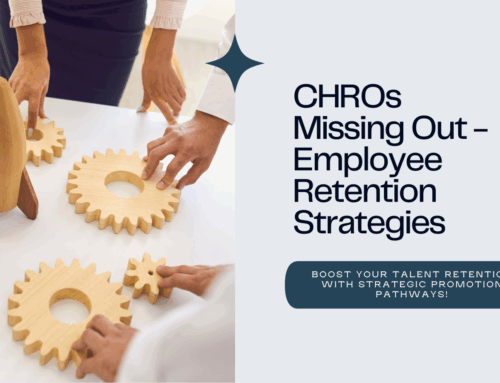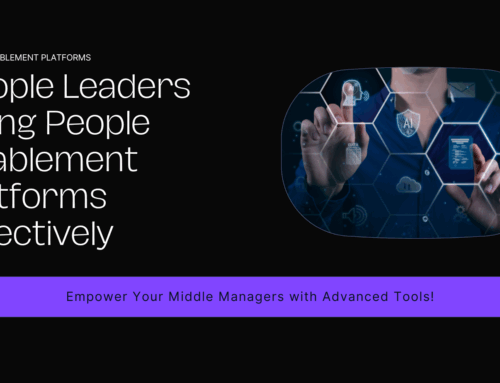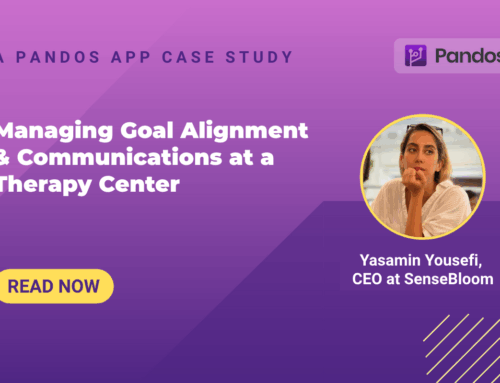At any position that you are in a company, whether you are the CEO or a new intern you face everyday challenges to fulfill your responsibilities and excel at the workplace. Although these challenges may seem different on the surface level depending on your position, they are, in fact, rooted in a common issue. An issue that companies are often ignorant of because they are accustomed to their status quo. Stories in Corey Atkinson’s book, Values Culture Period: Redefining the Value of Values to Drive Business Results reveals this issue and how it affects companies.
Read a chapter of the book here to find out about this common core challenge in companies:
Companies Core Challenge Reflected in a Story- Chapter 3: The Seed
Guy arrived at Savos headquarters just after 7:30 a.m. He had come in early to go through some reports, prepare for his many meetings, and to make sure that he had plenty of time to review his presentation for the Board of Trade meeting.
As he was walking towards the elevator, his cell phone rang. It was Janni.
“Hey, Janni, please don’t give me any bad news this morning.”
“Ha-ha, nothing bad this morning.”
Guy gave a big sigh and then said, “Thanks for your email last night. And I completely agree —we need to get all area directors on a call to discuss this union issue. Can you make that happen for this Friday? I want to make sure they are well informed.”
“Will do. I will also send them some information about rules of engagement when it comes to unions.”
“Any update from the labour union?”
“Well, we still won’t hear anything until after approval from the labour board. It’s only been a day, Guy.”
“No news is good news!” Guy replied with enthusiasm. “I’m very concerned about this, Janni. Let’s meet this afternoon with Ari from Legal to ensure we stay ahead of this.”
“Sure thing, Guy. Are you at the office already?”
“The early bird eats the best worms! Where are you?”
“Still having breakfast.”
“Ha-ha, enjoy your morning with the family. Say hi to Felicia for me. See you later.”
Guy hung up the phone as he pushed the button for the elevator. The elevator door opened, and as he walked in, a young lady walked in after him. She pushed the button for the 10th floor. Savos leased all the floors between 10th and 16th, with two of the floors sharing office space with other organizations, but the 10th floor was all Savos. The departments for regional operations, process improvements, food safety and services, supplier relations, and restaurant décor. He knew she worked for Savos, but did not know for which department. Nevertheless, he was slightly embarrassed that he didn’t know who she was.
Kathleen arrived at the Board of Trade lunch meeting just in time for the first speaker to take the stage. She recognized him from the award ceremony a month ago. With the official announcement of becoming the new COO at TBO, Kathleen had really struggled to find time to come to this month’s luncheon. But from the request of Marvin to represent him, she felt the need to be there.
Guy Topper was the first of the two luncheon speakers. He told a great story about how his organization had evolved from one restaurant in Milton, Ontario, to a network of 100 locations across Canada.
Kathleen was impressed by how Guy’s focus on staying lean helped the company survive the hard times. She was glad she was able to hear his speech.
After the MC thanked Guy and shared association updates with the audience, there was a 10-minute break before the second speaker would be introduced. Every time she came to these events, she could not help but laugh to herself when she saw all the executives put their heads down and go right to their phones instead of networking—like the event was meant for.
She walked over to Guy as he headed back to his seat. “That was an impressive story, thanks for sharing.”
“Oh, Merci!”
“Your Savos story required a lot of doggedness to make it through the rough times between years 5 – 7.”
“You’re right. But it seems doggedness was required at every stage of the journey. We have new battles to face today, and we have to face them head on.”
They were chatting more about some of Guy’s insights about growing the company when the MC called the room back to order and asked everyone to take their seats.
“Our next speaker has been studying and researching the human side of business operations since high school. He has lived in Canada for most of his life but has a world view like no other. Lately he has been spending time researching and writing and working with leaders in different organizations to help them transform their culture—both from a conscious and collaborative perspective. Everyone, please help me welcome the founder of The Culture Zone, Mr. Derek Owoson!”
Derek stood up from his seat at one of the front tables, smiled, waved to the audience, and walked up on stage. He shook hands with the MC and then walked to the centre of the stage, looked over the audience and then quietly said, “I want to start with this core statement…and whether you agree with it or not, I’d like you to really think about it. Your company culture is the DNA of your organization’s success. Get the culture right, then everything else that you need to be successful will fall into place.”
Derek left a long pause so everyone could let the words sink in. He continued, “How important is culture? Take a moment and consider these numbers:”
Over the next 30 minutes, Derek wowed the audience with stories of organizations who ignored their cultural thermometer or had poor cultures—consciously or unconsciously— creating a ripple effect that ultimately impacted employee motivation, turnover, revenue, market share and innovation. He shared incredible stories about leaked memos, executive sabotage, and confidential documents shared with the media. One company had the executive team place trackers in the CEO’s car and office so they could know what he was planning. That story left the entire room in stitches.
To ensure his message was heard, he left the stage and walked around the room to connect better with his audience. As Derek talked about the impact of culture on the entire organization’s overall success, Kathleen could not help but think about her conversation with Marvin and the culture at TBO. How could she have missed so much of this ever since she joined the organization?
Derek continued. “At the Culture Zone, we have done extensive research on successful organizations. We have met with their CEOs, Chief People Leaders, sat with frontline staff members and spent hours interviewing, observing and collecting data. We have also interviewed and met with others who have changed cultures outside of the corporate world. We’ve learned so much about culture and have seen so many recurring patterns. Through all of this, we have been able to create a model that can help transform your culture.”
Derek took a long pause that drew everyone in as he walked back to the front of the room. “Our formula is what we call the Culture Ring—four distinct phases of transformation that help organizations create desired cultures—effectively and efficiently.” For the first time in the 30 minutes he had been speaking, he pointed the attendees’ attention to the screen. And on cue, the Culture Ring diagram appeared.
As he spoke, members of the audience lifted their smart phones to take a picture.
“The words in the boxes are not new to any of you here today, but what is new is how we combine each aspect to bring about cultural transformation, quickly. Let me tell you about each phase.”
“Operational Values Model, or OVM, is critical step number one. Our model goes beyond asking “why” (which still has its place), but we go a step further and ask: “why you?” It is a fact that you cannot have a strong culture, if you do not have strong, active values in place. Values that can dictate the behaviours you celebrate and want as an organization. Your values determine the key outputs in your culture. The OVM helps you clarify values and provides a process to embed values into your daily organization operations.”

Guy could not believe what he was hearing. The speaker was talking exactly about what Savos was facing. He looked around the room and nobody looked back at him. Everyone was looking at and listening to what Derek was sharing. Others were opening laptops and were taking notes while some in the back were standing up and taking pictures of the speaker with their smartphones.
“Phase two—values engagement. We are living in the experience economy, so we need to create an experience that drives engagement. Engagement with team and employee values. You are all familiar with the term employee engagement, which is the extent to which employees feel passionate about their work and are committed to your organization. Value engagement is the consistent process of ensuring values at all levels of the organization are aligned. You cannot change your culture if your employees’ values are not considered or aligned.”
Derek then took a step towards the audience, leaned forward, and said, “Or worse, if the values are aligned with behaviours that are in opposition to business goals.”
Many in the audience were now nodding their heads in agreement or were making more notes on the laptops or pads of paper.
Derek continued. “The third area is development. But I want you to think deeper about what development means. My research has shown me that it comes from the 1600s French word développer, and originally meant to unroll or unfold. So the mindset we need in this third phase is just that—we need to unfold and make apparent the potential in our performers, at all levels. And that development must begin with leadership development. Are you aware that employees who rate their managers poorly are four times more likely to interview for other positions when compared to their peers? Leadership development, from a cultural perspective, ensures leaders understand their role in building a great culture. It also prepares them personally, for culture transformation. You cannot embed your values, improve employee engagement, and transform your culture but not work on the mindset of your leaders at every level.”
“The last phase is about making culture count. We call it The Culture Identity. This is the icing on the cake that pulls it all together and ensures that the desired behaviours to activate the values are connected to tangible results. This is important as it is a great way to see where your culture stands with regards to behaviours and measurables. It allows you to become very intentional about different parts of your culture, and helps keep your eye on your culture thermometer.
“In closing, if you want to drive business results for the long haul, consider how seriously you take culture. And remember this number, 55%. Fifty-five percent of the current work force is engaged. What would it mean to your business if we increased that to 75 % or 85%, ideally 100 percent? My name is Derek, and it has been a pleasure being a part of your culture today.”
Derek rounded up his speech to a resounding applause. The MC walked up to the stage to thank Derek for his insights and tools and give his final remarks.
While the MC was sharing final thoughts on the two speakers and Board business, Kathleen could not put her finger on it, but something just did not sit with her. The information seemed relevant, the stories and statistics credible…but somehow, she did not buy into it.
“What did you think?” A voice from behind Kathleen caught her off guard. It was Guy.
“About what?
“About the ring and the VMO stuff. What Derek just spoke about?”
“Well….” Kathleen said unenthusiastically. “It seems like he had the research to back up his ideas, but I’m not sure that stuff would work in our industry. I’m in banking, and banking will always need to manage the values of our shareholders, government regulations and customers. There are too many players involved for us to pick a few values to run our business through? I cannot really put my finger on it, but I was not fully convinced.”
“Interesting… what about it wasn’t convincing?”
To get a copy of Values.Culture.Period click here.
For more information about the book and the authors, email – hello@pandos.io




